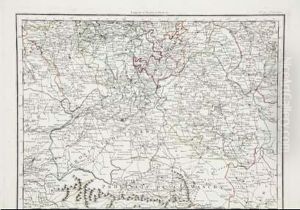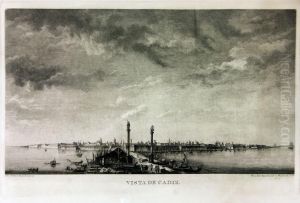Tomas Lopez Enguidanos Paintings
Tomás López Enguídanos was a Spanish cartographer and engraver born in Valencia in 1775 into a family with strong ties to the world of cartography and engraving. His father, Tomás López de Vargas Machuca, was a renowned geographer and cartographer who served as Royal Geographer to the King of Spain. This familial environment immersed López Enguídanos in the discipline from an early age, setting the course for his future career.
López Enguídanos's work was influenced by the Enlightenment, an era that emphasized science and reason, and during which cartography was particularly valued for both its practical uses in navigation and territorial administration, as well as its contribution to the broader knowledge of geography. He assisted his father in the production of maps and atlases, honing his skills in the process. After his father’s death in 1802, López Enguídanos continued the family tradition, taking over the role of Royal Geographer.
During his career, López Enguídanos produced a significant number of maps and geographic works. He updated and expanded upon his father's Atlas of Spain and the Indies, ensuring the maps reflected the latest geographical discoveries and political changes of the time. His work was characterized by its precision and attention to detail, which was of paramount importance in an era when accurate geographical information was crucial for both scientific and military purposes.
López Enguídanos’s contributions to cartography were part of a larger movement in Spain that sought to better understand and document the territory of the Spanish Empire, which at the time still included vast regions in the Americas as well as parts of Europe, Asia, and Africa. His maps served as valuable tools for explorers, sailors, and government officials. They were also used for educational purposes, helping to disseminate geographical knowledge to a broader public.
Tomás López Enguídanos passed away in 1830. Although not as widely known as some of his European contemporaries, his work remains an important part of the cartographic history of Spain and its former empire. His maps are still of interest to historians and collectors for their historical value and as artefacts of the map-making craft during the Enlightenment period.

